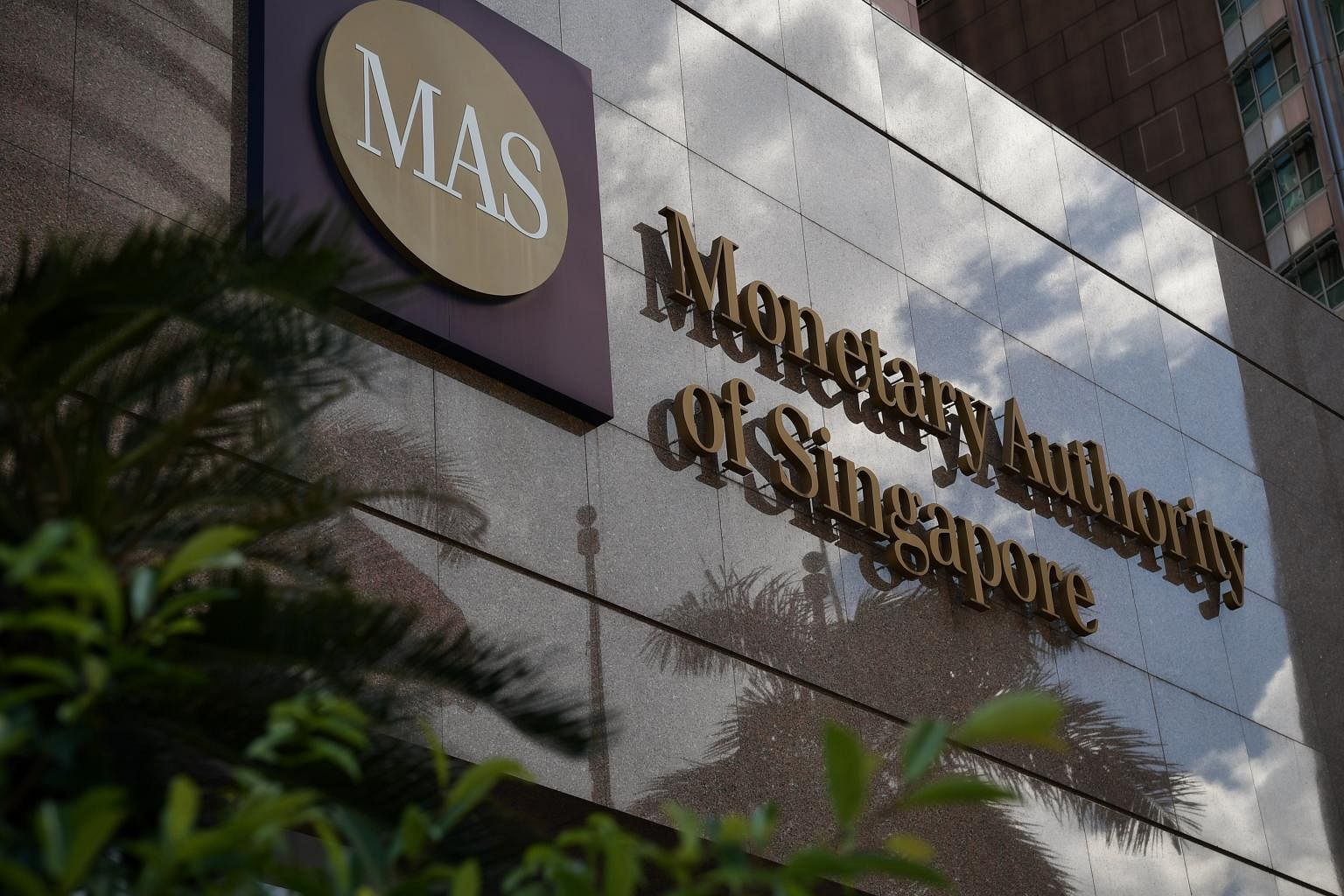MAS tightens Singdollar policy for second time in 3 months to counter rising inflation
Sign up now: Get ST's newsletters delivered to your inbox

The Monetary Authority of Singapore also raised its forecasts for inflation this year.
PHOTO: ST FILE
Follow topic:
SINGAPORE - Singapore’s central bank tightened its monetary policy in a surprise off-cycle move on Tuesday (Jan 25), to help strengthen the Singapore dollar and combat inflation running at its fastest pace in nearly eight years.
In its second tightening move in three months, the Monetary Authority of Singapore (MAS) raised slightly the "slope" or rate of appreciation of its Singapore dollar policy band. The width of the policy band and the level at which it is centred remain unchanged.
"This move builds on the pre-emptive shift to an appreciating stance in October 2021 and is appropriate for ensuring medium-term price stability," MAS said.
This is only the second time the central bank has acted between its biannual monetary policy statements (MPS) set for April and October since 2003. The last time MAS made an off-cycle move was in January 2015, when it reduced the slope of its policy band.
The Singapore dollar strengthened after the move, trading 0.3 per cent higher at 1.343 per US dollar as at 12.03pm.
MAS' move comes a day after data showed consumer prices as measured by core inflation, which strips out accommodation and private road transport costs, jumping to 2.1 per cent in December on a year-on-year basis - the highest since July 2014.
Headline or overall inflation rose to 4 per cent, up from 3.8 per cent in November and the most since February 2013, when it surged 4.9 per cent.
"Inflation begets further inflation if consumers bring forward their purchases due to concerns that prices are likely to go up," said Ms Cheryl Chan, senior vice-president for capital markets at digital securities exchange ADDX. "By announcing the policy change sooner rather than later, MAS is sending a clear signal to the market that it stands ready to act to bring prices under control."
DBS Bank senior economist Irvin Seah said that with inflation defying gravity, a move in April would have been too late.
“Policymakers have to anchor inflation expectations and buffer imported inflation as soon as possible,” he said.
On Tuesday, MAS also raised its forecasts for inflation this year.
It now sees core inflation at 2 per cent to 3 per cent in 2022, from the 1 per cent to 2 per cent expected in October last year. Overall inflation is seen at 2.5 per cent to 3.5 per cent, from the earlier forecast range of 1.5 per cent to 2.5 per cent.
Ms Selena Ling, chief economist and head of treasury research and strategy at OCBC Bank, said MAS may choose to tighten again in April if inflation keeps rising.
“The April MPS likely remains ‘live’ if core inflationary pressures show no signs of easing towards mid-2022. For instance, if core inflation exceeds the 3 per cent upper forecast range and does not stabilise soon,” she said.
Since Singapore imports almost everything it consumes, MAS manages monetary policy through exchange rate settings rather than interest rates, letting the Singapore dollar rise or fall against the currencies of its main trading partners within an undisclosed policy band.
A stronger currency lowers the cost of imports.
MAS adjusts its policy in three ways: the slope, mid-point and width of the policy band, known as the nominal effective exchange rate, or S$Neer.
“MAS had assessed that a shift in its policy stance was necessary to ensure price stability in the light of accumulating external and domestic cost pressures, even as the strength of the economic recovery remained uncertain,” it added.
MAS shifted last October to a gradual appreciation path for its Singdollar policy, from zero per cent previously, in the face of higher inflation.
The zero per cent appreciation path was adopted in March 2020 when the Singapore economy began to suffer the fallout from the Covid-19 pandemic.

